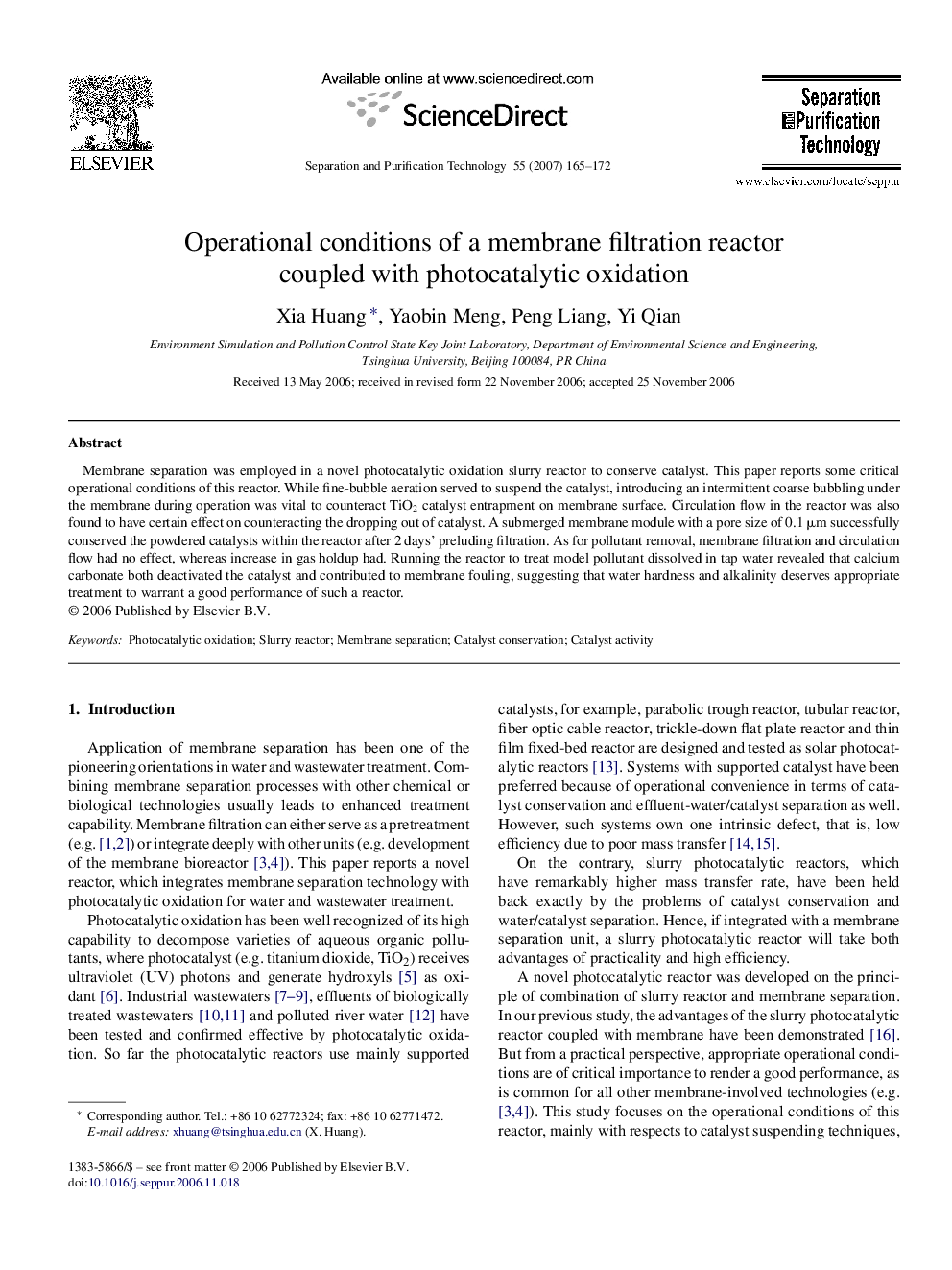| Article ID | Journal | Published Year | Pages | File Type |
|---|---|---|---|---|
| 643829 | Separation and Purification Technology | 2007 | 8 Pages |
Membrane separation was employed in a novel photocatalytic oxidation slurry reactor to conserve catalyst. This paper reports some critical operational conditions of this reactor. While fine-bubble aeration served to suspend the catalyst, introducing an intermittent coarse bubbling under the membrane during operation was vital to counteract TiO2 catalyst entrapment on membrane surface. Circulation flow in the reactor was also found to have certain effect on counteracting the dropping out of catalyst. A submerged membrane module with a pore size of 0.1 μm successfully conserved the powdered catalysts within the reactor after 2 days’ preluding filtration. As for pollutant removal, membrane filtration and circulation flow had no effect, whereas increase in gas holdup had. Running the reactor to treat model pollutant dissolved in tap water revealed that calcium carbonate both deactivated the catalyst and contributed to membrane fouling, suggesting that water hardness and alkalinity deserves appropriate treatment to warrant a good performance of such a reactor.
